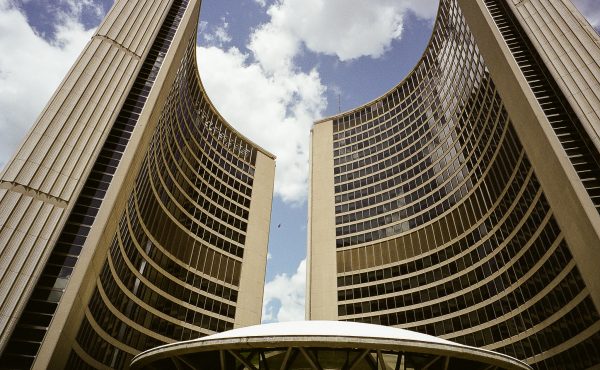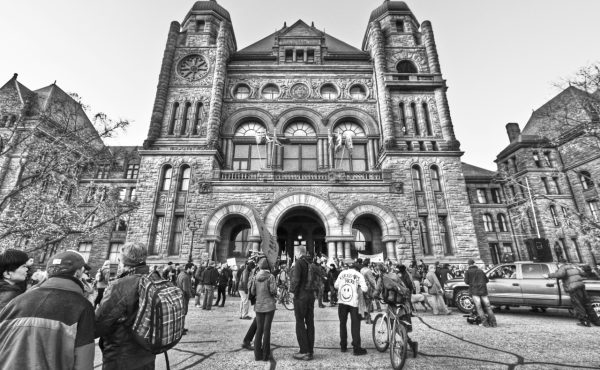The CivicAction report (PDF) on reliable transit funding lists a variety of options that would raise smaller amounts of money for building new transit than the “big four” I have already discussed. Many of these options have been tried in one city or another.
Personally, I am skeptical of these options because using any of them would require also using yet another type of revenue tool to make up the sums required by Metrolinx. The more new revenue tools are used, the stronger the political opposition is likely to be. However, they might be useful for a) filling in a small gap in the funding, or, b) funding projects specific to an individual city (for example, a small project that was important to Toronto but not in Metrolinx’s regional strategy).
I will list and comment on these options briefly:
High Occupancy Toll (HOT) Lanes or Express Lanes on GTHA Freeways
The idea is to charge single drivers to use High Occupancy lanes, or all drivers to use express lanes.
Depending on the implementation, could raise from $200-$800 million a year.
Effectively, these are “tolls lite”. The Express lanes idea would give an “out” to drivers using congested collector lanes for free, but the various issues with tolls still apply.
The HOT lane tolls don’t make a lot of sense to me, because they confuse two different anti-congestion strategies — the HOT lanes could just end up congested and therefore not provide a benefit to vehicles being used efficiently to carry more people. One advantage might be, however, that they become better enforced.
HST Revenue from Gas/Diesel Sales Tax
The idea is to divert new tax revenue from the fact the new HST is applied to the existing gas tax, creating a tax on a tax: $400-$600 million a year.
This is basically a “gas tax lite”. The Province is in deficit and already using the new revenue, so it’s a non-starter with the provincial government.
Congestion Charge
A fee for entering a zone of the city (as in London, England), or a per-kilometre fee for using any road in the region. Could raise $250-$500 million a year for a zone charge.
As I noted when discussing tolls, the central-city congestion charge is not very relevant to Toronto, as congestion is as much a problem across the entire city as it is in the core. Any cordon would also lead to concerns about discouraging jobs and investment in the zone. As for the per-kilometer concept, it would be based on new technology and complex, expensive and risky to implement. Cheaper and more reliable ways of raising revenue are available.
Vehicle Registration Fee
The fee would be added to the provincial vehicle registration fee. Toronto has already tried this option and then abolished it, but it was used for general revenue, not dedicated to transportation improvements.
$100/vehicle would generate an estimated $200 million a year GTAH-wide.
This fee, easily collected, could make sense as a local city levy to fund local transportation projects. It might be more politically viable if dedicated to local transportation purposes rather than going into general revenue.
Value Capture Levy
The idea is to take a slice off the increase in property values that result from nearby new higher-order transit construction.
It wouldn’t raise much ($50-$100 million a year).
This levy actually penalizes property owners for being near transit, so it creates an underlying negative incentive for transit support. It particularly has a negative effect on existing people and businesses who have lower incomes and don’t want to move after transit is built nearby. Also, it is complicated and hard to sell.
In her OneCity transit proposal this summer, Karen Stintz proposed a city-wide (not just near higher-order transit) variation on this concept, to fund transit.
Utility Bill Levy
An extra charge on utility bills. Has nothing to do with transportation, and doesn’t raise much ($50-$100 million a year). Also, water and electricity bills have already seen major increases in recent years, so likely to generate strong opposition.
Employer Payroll Tax
A charge on employers who are within walking distance of transit — the idea is to capture some of the advantage they gain. Wouldn’t raise much ($40-$80 million).
Again, creates negative behaviour incentives — businesses would avoid locating near transit. Also, would be hard to define the area. Together, would make for distorted and very undesirable property investment decisions.
The New York region uses a general payroll tax to fund transit applied to all businesses in the region, which removes the negative incentive for locating near transit.
National Federal-Provincial Transit Strategy
Nice idea, but there’s no prospect of additional federal or provincial money in the near or even middle-term future, as both are wrestling with deficits.
In any case, what upper levels of goverment give, they also take away. To fund a long-term plan, the GTHA needs funding that is stable, predictable and consistent. None of these adjectives ever apply to funding from other governments.
What do our readers think of these options? Do any of them merit a second look? Are there other issues, positive or negative, that should be considered?






6 comments
A value capture levy is a strange idea. If proximity to transit increases property value, then that increase should already be captured in MPAC assessments.
The H.O.T. optional toll for single passenger vehicle’s is an interesting idea.
I would suggest the following
A parking tax that would charge $100 per year for every residential spot, and $300 per year for commercial ones.
Raise transit fares and move to a fare system that is distance based.
A 1 cent per KM surcharge on vehicles. This could be calculated from odometer readings at time of licence renewals.
A drive thru tax at $.25 per car.
I like the idea of raising the transit fares and move to a fare system that is distance based. If costs you more to drive a longer distance, why is it not the same for transit. I believe there are people who are discouraged from using transit because they are going a short distance or have to make frequent stops and don’t want to commit to a monthly pass. I used to live in Melbourne and I loved the zone system, unlimited travel in your zone for 2 hours, or between zones in you paid the additional fare. It was much more convenient for doing errands, dropping off / picking up kids, etc. They also designed the system so that the streetcars (trams) were in their own dedicated ROW (think Spadina), so transit was always the quicker way, into and out of the core. Transit riders had the priority.
Dylan,
On most HOT lanes, tolls are variable and calibrated to prevent the HOT lanes from becoming congested. The toll varies in order to maintain a given operating speed (90kph?), with prices increasing to reduce demand.
Glen,
I’m not sure what you mean by residential parking. Do you mean driveways and garages? If you mean permit parking, it already costs $185 per year.
David,
I am suggesting that if a home has parking for 4 cars, in either garages or on a driveway, it should pay an additional $400 per year.
David,
I am not sure what Glen means, but I guess he does mean driveways and garages, which basically amounts to a property tax increase. BTW, I think permit parking fee is mightly low and should be at least doubled (disclosure, I am doing permit parking myself).